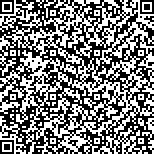| 引用本文: |
叶勇,罗容,范升,申韬,龙抗胜,汤伟,刘巨尧,林紫嫣.针刀合谷刺法联合三维整脊手法治疗腰椎间盘突出症的临床观察[J].湖南中医药大学学报,2023,43(5):885-890[点击复制] |
|
| |
|
|
| 本文已被:浏览 3434次 下载 1222次 |
| 针刀合谷刺法联合三维整脊手法治疗腰椎间盘突出症的临床观察 |
| 叶勇,罗容,范升,申韬,龙抗胜,汤伟,刘巨尧,林紫嫣 |
| (湖南中医药大学第一附属医院, 湖南 长沙 410007;湖南中医药大学, 湖南 长沙 410208) |
| 摘要: |
| 目的 观察针刀合谷刺法联合三维整脊手法治疗腰椎间盘突出症(lumbar disc herniation, LDH)的临床疗效,为临床非手术治疗LDH提供新思路,并为"筋骨并重"理念提供临床科学依据。方法 将60例LDH患者随机分为观察组与对照组,每组30例,观察组采用针刀联合三维整脊手法,对照组采用单纯针刀疗法。通过观察治疗前后两组患者的视觉疼痛模拟评分(visual analogue score, VAS)、日本骨科协会评估治疗(Japanese Orthopaedic Association, JOA)评分、后肌链角度肌张力指数、整体姿势对称性、腰部姿势对称性、椎旁关键肌表面肌电指标,比较两组的临床疗效、后肌链张力效应及椎旁肌耐疲劳性。结果 (1)观察组总有效率86.67%,高于对照组的73.33%,但差异无统计学意义(P>0.05)。(2)治疗后,两组患者VAS评分、后肌链角度肌张力指数、整体姿势对称性及腰部姿势对称性指标均较治疗前降低(P<0.05,P<0.01),且观察组VAS评分、角度肌张力指数、腰段姿势对称性指标均低于对照组(P<0.05),但脊柱整体姿势对称性稍高于对照组,差异无统计学意义(P>0.05)。(3)治疗后,两组患者JOA评分、患侧腹直肌、腹横肌以及腰段竖脊肌均方根(root mean square, RMS)值均较治疗前明显提高(P<0.05,P<0.01),且观察组JOA评分、患侧腰段竖直肌RMS值高于对照组(P<0.05),而两组患侧腹直肌、腹横肌RMS值组间比较差异无统计学意义(P>0.05);两组健侧腹直肌、腹横肌、腰段竖脊肌RMS值与治疗前相比,差异无统计学意义(P>0.05)。结论 针刀合谷刺法联合三维整脊手法能够缓解LDH患者临床症状,改善腰椎功能活动,提高患者生活质量,有效调整后肌链张力指数及腰部姿势对称性,提升椎旁肌肉肌力,促进局部生物力学平衡,其疗效优于单纯针刀组。 |
| 关键词: 针刀合谷刺法 三维整脊手法 腰椎间盘突出症 后肌链 角度肌张力 姿势对称性 表面肌电 |
| DOI:10.3969/j.issn.1674-070X.2023.05.018 |
| 投稿时间:2022-05-31 |
| 基金项目:湖南省中医药科研计划项目重点课题(201907);湖南省发改委创新研发项目(2019127);湖南省“十四五”第一批中医药领军人才和学科带头人培养项目(湘中医药〔2022〕4号)。 |
|
| Clinical observation on Hegu (LI4) needling with needle-knife combined with three-dimensional chiropractic manipulation in treating lumbar disc herniation |
| YE Yong,LUO Rong,FAN Sheng,SHEN Tao,LONG Kangsheng,TANG Wei,LIU Juyao,LIN Ziyan |
| (The First Hospital of Hunan University of Chinese Medicine, Changsha, Hunan 410007, China;Hunan University of Chinese Medicine, Changsha, Hunan 410208, China) |
| Abstract: |
| Objective To observe the clinical efficacy of Hegu (LI4) needling with needle-knife combined with three-dimensional chiropractic manipulation in treating lumbar disc herniation (LDH), so as to provide new ideas for non-surgical treatment of LDH in clinical practice, and to provide clinical evidence for the concept of "emphasizing both muscles and bones". Methods Sixty LDH patients were randomly divided into observation group and control group, with 30 cases in each group. Observation group was treated with needle-knife combined with three-dimensional chiropractic manipulation, while control group was treated with needle-knife only. By observing the visual analogue scale (VAS) score, Japanese Orthopaedic Association (JOA) score, posterior chain angular muscle tension index, overall postural symmetry, lumbar postural symmetry, and surface electromyographic indicators of the key paravertebral muscles of the patients in the two groups before and after treatment, the clinical efficacy, posterior muscle chain tension effect, and paravertebral muscular fatigue resistance of the two groups were compared. Results (1) The total effective rate of observation group was 86.67%, higher than 73.33% of control group, but the difference was not statistically significant (P>0.05). (2) After treatment, the VAS score, posterior chain angular muscle tension index, indicators of overall postural symmetry and lumbar postural symmetry of the patients in both groups decreased compared with those before treatment (P<0.05, P<0.01). The VAS score, angular muscle tension index, and the indicator of lumbar postural symmetry of the patients in observation group were lower than those of the patients in control group (P<0.05), but the indicator of overall postural symmetry of the spine was slightly higher than that in control group, with no statistically significant difference (P>0.05). (3) After treatment, the JOA score, root mean square (RMS) values of the affected rectus abdominis, transversus abdominis and lumbar erector spinae of the patients in both groups were significantly higher than those before treatment (P<0.05, P<0.01). The JOA score and RMS values of the affected lumbar vertical muscles of the patients in observation group were higher than those of patients in control group (P<0.05), but there was no significant difference between the two groups in the RMS values of the affected rectus abdominis and transversus abdominis (P>0.05); the RMS values of the healthy rectus abdominis, transversus abdominis and lumbar erector spinae in the two groups were not significantly different from those before treatment (P>0.05). Conclusion The combination of Hegu (LI4) needling with needle-knife and three-dimensional chiropractic manipulation can alleviate clinical symptoms of LDH patients and improve lumbar functional activity, so as to improve life quality of the patients. It can effectively adjust the posterior muscle chain tension index and lumbar postural symmetry, enhance paravertebral muscle force, and promote local biomechanical balance. Its therapeutic effect is superior to that of needle-knife applied only. |
| Key words: Hegu (LI4) needling with needle-knife three-dimensional chiropractic manipulation lumbar disc herniation posterior muscle chain angular muscle tension postural symmetry surface electromyograph |
|

二维码(扫一下试试看!) |
|
|
|
|




